RESEARCH



Do not fill out this information.
On this particular page, the Initial Text and Image fields for this template are not used (inactive). A Carousel Slideshow is displayed instead.
To edit the Carousel Slideshow, Choose Edit Existing > Carousel Slides. Then navigate to your CZO's entry entitled "Research"
Goal 1
DEVELOP A UNIFYING THEORETICAL FRAMEWORK of critical zone evolution that integrates physical, chemical, and biological processes.
The CZOS are working toward a holistic conceptual model of critical zone evolution that couples hydrological, geochemical, geomorphic, and biological processes. Such a model must consider many spatial and temporal scales.
Goal 2
DEVELOP COUPLED SYSTEMS MODELS to explore how critical zone services respond to anthropogenic, climatic, and tectonic forcings.
The CZOs are building systems models that quantitatively combine multiple processes, often spanning an entire watershed. These models typically track fluxes and storage of energy, water, carbon, sediments, and/or other materials.
Goal 3
DEVELOP INTEGRATED, EXTENSIVE DATASETS that document a wide range of critical zone settings, including geology and climate.
The CZOs are assembling the needed infrastructure for an integrated data/ measurement foundation. This foundation will inform our theoretical framework, constrain our models, and help test hypotheses across CZOs.
Fundamental Questions
Despite the Critical Zone's importance to terrestrial life and many environmental issues, it remains poorly understood. Key questions include:
- How does the Critical Zone form?
- How does it operate?
- How does it evolve?
There are many followup questions as well. For example:
- How will the Critical Zone respond to projected climate and land use changes?
Specific Questions
Each Critical Zone Observatory is helping work on these fundamental questions along with numerous others. Some questions are specific to the unique characteristics of their field site and the talents of their collaborative research team. Some examples:
-
What is the legacy of climate and geologic history in critical zone architecture?
- Boulder -
How does variability in energy input and related mass flux influence critical zone structure and function?
- Jemez-Catalina -
How does saprolite advance vary with regolith thickness and landscape position?
- Luquillo -
How does water sculpt a landscape on shale bedrock?
- Shale Hills -
How does landscape variability control how soil moisture, evapotranspiration and streamflow respond to snowmelt and rainfall?
- Southern Sierra
Cross-CZO Questions
A key advantage of the coordinated system of Critical Zone Observatories is that it can address the biggest questions by leveraging differing environments and histories. More specifically, cross-CZO science can begin to answer questions such as:
- How do processes that nourish ecosystems change over human and geologic time scales?
- How do biogeochemical processes govern long-term sustainability of water and soil resources?
- What processes control fluxes of carbon, particulates, and reactive gases over different timescales?
- How do variations in and perturbations to chemical and physical weathering processes impact the Critical Zone?
An expressed goal of the CZO program is to catalyze transformative Earth surface science in the coming decade by developing cross-site science that helps to establish: 1) a unifying theory of CZ evolution; 2) coupled systems models to explore how CZ services respond to anthropogenic, climatic, and tectonic forcing; and 3) data sets that document differing CZ geologic and climatic settings, inform the theoretical framework, constrain conceptual and coupled systems models, and test model-generated hypotheses.
Our Approach
Answering fundamental questions requires much better knowledge of how physical, chemical, and biological processes in the Critical Zone are coupled and at what spatial and temporal scales. Many of these processes are highly non-linear and can range across vast scales - from atomic to global, and from seconds to eons.
Interdisciplinary & Multidisciplinary
To better understand how the complex processes of the Critical Zone are linked, the U.S. NSF National CZO Program employs a systems approach across a broad array of sciences. This interdisciplinary and multidisciplinary approach integrates many disciplines, especially in the geological and biological sciences. Examples include hydrology, ecology, biogeochemistry, and geomorphology.
A Common Infrastructure
Our systems approach across disciplines is well supported via our infrastructure. Our nine observatories span a range of climatic, geologic, and physiographic environments, from California to Puerto Rico. Each CZO is working toward a common set of resources, which will enable comparison of whole-watershed energy and mass balances across a variety of settings.
Community & Collaboration
Within each CZO, scientific collaborations are common, often bringing together researchers from different institutions and crossing disciplinary boundaries. This team-based approach helps foster a strong community, which is further strengthed by graduate student involvement. Similar collaborations occur between investigators and students at different CZOs as well as with members of other US science programs. Moreover, the US CZO program also works with an international network of Critical Zone investigators and research sites.
Predictive Ability
An immediate challenge is to develop a robust predictive ability for how the structure and function of the Critical Zone evolves, including how it will respond to projected climate and land-use changes. This predictive ability must be founded on:
- Broad knowledge of the complex physical, chemical, and biological processes of the Critical Zone
- The ability to describe interactions between the varied climatic and geologic factors that distinguish different regions.
- Advances in theory, modeling, and measurement.
Over the next decade, the CZO program will produce a fundamental understanding and four-dimensional data sets that will stimulate, inspire, and test the resulting predictive models.
Read: Future Directions for CZO Science >
Research News
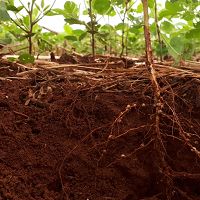
FEATURED NATIONALLY
NSF Blog: No soils, no life
27 Oct 2020 (National, Boulder, Calhoun, Catalina-Jemez, Eel, IML, Luquillo, Reynolds, Shale Hills, Sierra) - They’re beneath our feet, but we seldom hear important signals in the soils
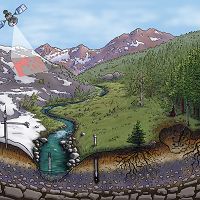
FEATURED NATIONALLY
2020 CZO Webinar Series on Sustainability
17 Jun 2020 (National, Boulder, Calhoun, Catalina-Jemez, Eel, IML, Luquillo, Reynolds, Shale Hills, Sierra) - For an updated listing of these talks, including abstracts, see /national/education-outreach/sustainability-2020/ The U.S....
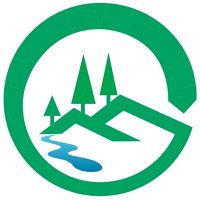
FEATURED
More news about SSCZO on Center for Ecosystem Climate Solutions
24 Nov 2020 (Sierra) - More news about SSCZO on Center for Ecosystem Climate Solutions, which grew out of the SSCZO, also on Sustainable California

FEATURED
27-minute film California’s Watershed is being shown on PBS nationwide
24 Nov 2020 (Sierra) - This film, plus our 90-minute documentary Beyond the Brink, are also available at https://www.beyondthebrink.global/
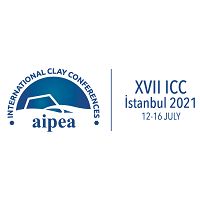
Sessions related to CZ Science at the 2021 International Clay Conference
27 Oct 2020 (Calhoun) - The 17th International Clay Conference will be held July 12-16, 2021 in Istanbul, Turkey.
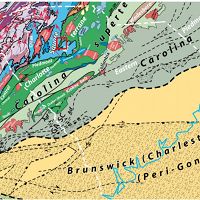
Geology of the Calhoun CZO
05 Jun 2020 (Calhoun) - Barrett "Bear" Jordan's MS thesis on the geology of the Calhoun is now posted! Bear's advisor Paul Schroeder says this is "a bit more...
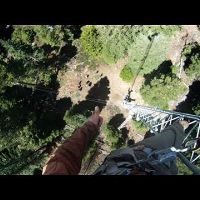
FEATURED
Southern Sierra CZO Videos
04 May 2020 (Sierra) - Onward California - University of California television spots showcase Southern Sierra CZO research
Example Publications
FEATURED NATIONALLY
Increasing plant water stress and decreasing summer streamflow in response to a warmer and wetter climate in seasonally snow‐covered forests. Christensen L., Adams HR, Tai X, Barnard HR, Brooks PD (2020): Ecohydrology e2256 (online) (Boulder, Catalina-Jemez) Cross-CZO
FEATURED NATIONALLY
Where is the bottom of a watershed?. Condon L.E., Markovich K.H., Kelleher C.A., McDonnell J.J., Ferguson G., and McIntosh J.C. (2020): Water Resources Research 56(3): e2019WR026010 (Catalina-Jemez)
FEATURED NATIONALLY
Quantification of Mixed-Layer Clays in Multiple Saturation States Using NEWMOD2: Implications for the Potassium Uplift Hypothesis in the SE United States. Austin, J.C., Richter, D.D. & Schroeder, P.A. (2020): Clays and Clay Minerals (Calhoun)
FEATURED NATIONALLY
Digging deeper: what the critical zone perspective adds to the study of plant ecophysiology. Dawson, T.E., Hahm, W.J., & Crutchfield-Peters, K. (2020): New Phytologist 226 (3): 666-671 (Eel)
FEATURED NATIONALLY
Temporal dynamics of migration‐linked genetic variation are driven by streamflows and riverscape permeability. Kelson, S.J., Miller, M.R., Thompson, T.Q., O'Rourke, S.M. & Carlson, S.M. (2020): Molecular Ecology 29 (5): 870-885 (Eel)
FEATURED NATIONALLY
Resolving Deep Critical Zone Architecture in Complex Volcanic Terrain. Moravec B.G., White A.M., Root R.A, Sanchez A., Olshansky Y., Paras B.K., Carr B., McIntosh J., Pelletier J.D., Rasmussen C., Holbrook W.S., Chorover J. (2020): Journal of Geophysical Research: Earth Surface 125(1): e2019JF005189 (Boulder, Catalina-Jemez, Eel, Reynolds, Sierra) Cross-CZO
Channelization cascade in landscape evolution. Bonetti, S., M. Hooshyar, C. Camporeale, and A. Porporato (2020): PNAS 117(3): 1375-1382 (Calhoun)
Variational analysis of landscape elevation and drainage networks. Hooshyar, M., S. Anand, and A. Porporato (2020): Proceedings of the Royal Society A, 476(2239), 20190775 (Calhoun)
Wetness controls on global chemical weathering. Calabrese, S., and A. Porporato (2020): Environmental Research Communications 2(8), 085005 (Calhoun)
Rainfall intensification increases the contribution of rewetting pulses to soil heterotrophic respiration. Manzoni, S., A. Chakrawal, T. Fischer, J.P. Schimel, A. Porporato, and G. Vico (2020): Biogeosciences 17(15): 4007-4023 (Calhoun)
From turbulence to landscapes: Logarithmic mean profiles in bounded complex systems. Hooshyar, M., S. Bonetti, A. Singh, E. Foufoula-Georgiou, and A. Porporato (2020): Physical Review E 102, 033107 (Calhoun)
Linear layout of multiple flow-direction networks for landscape-evolution simulations. Anand, S.K., M. Hooshyar, and A. Porporato (2020): Environmental Modelling & Software 133: 104804 (Calhoun)
FEATURED
Impact of gully incision on hillslope hydrology. Chen, Xing, Mukesh Kumar, Daniel deB. Richter, and Yair Mau (2020): Hydrological Processes 34(19): 3848-3866 (Calhoun)
Explore Further
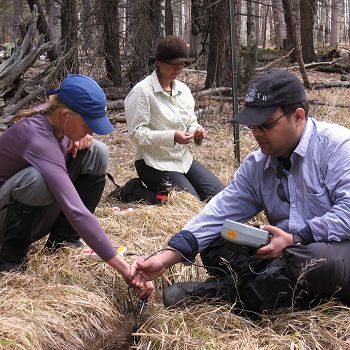
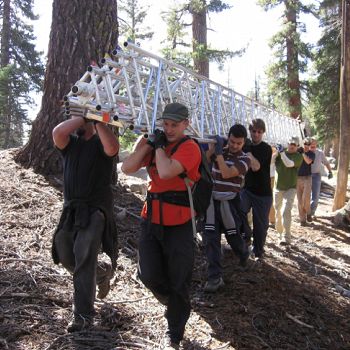
_pete_joergIMGP0003_350_350_80auto_s_c1.jpg)
